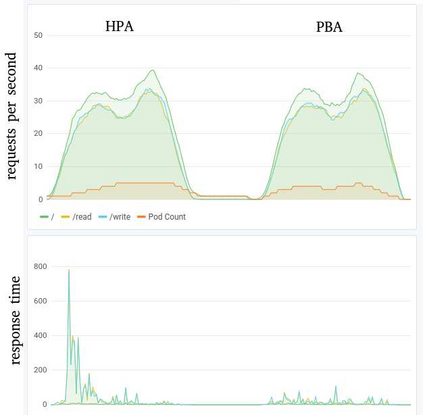Serverless computing is a buzzword that is being used commonly in the world of technology and among developers and businesses. Using the Function-as-a-Service (FaaS) model of serverless, one can easily deploy their applications to the cloud and go live in a matter of days, it facilitates the developers to focus on their core business logic and the backend process such as managing the infrastructure, scaling of the application, updation of software and other dependencies is handled by the Cloud Service Provider. One of the features of serverless computing is ability to scale the containers to zero, which results in a problem called cold start. The challenging part is to reduce the cold start latency without the consumption of extra resources. In this paper, we use SARIMA (Seasonal Auto Regressive Integrated Moving Average), one of the classical time series forecasting models to predict the time at which the incoming request comes, and accordingly increase or decrease the amount of required containers to minimize the resource wastage, thus reducing the function launching time. Finally, we implement PBA (Prediction Based Autoscaler) and compare it with the default HPA (Horizontal Pod Autoscaler), which comes inbuilt with kubernetes. The results showed that PBA performs fairly better than the default HPA, while reducing the wastage of resources.
翻译:无服务器的计算是技术世界和开发商和企业中常用的一个词。使用无服务器的功能即服务模式(Faas-as-S),人们可以很容易地将其应用程序部署到云中,在几天内就可生存,它有利于开发者关注其核心商业逻辑和后端进程,如基础设施管理、应用规模扩大、软件升级和其他依赖性,由云服务提供商处理。无服务器计算的特点之一是将容器缩到零,这导致一个称为“冷启动”的问题。挑战部分是减少冷启动时间,而不消耗额外的资源。在本文中,我们使用SARIMA(SASONA Auto Revilationive Indate Movelop 平均),这是典型的时间序列预测模型之一,用来预测收到请求的时间,并相应增加或减少所需的容器数量,以尽量减少资源浪费,从而减少功能启动时间。最后,我们实施了PBA(BA),并比HPA(HBA)的默认运行结果要更好,而HBA(Horizalphal Popal)的运行情况则比HBA更加稳定。












